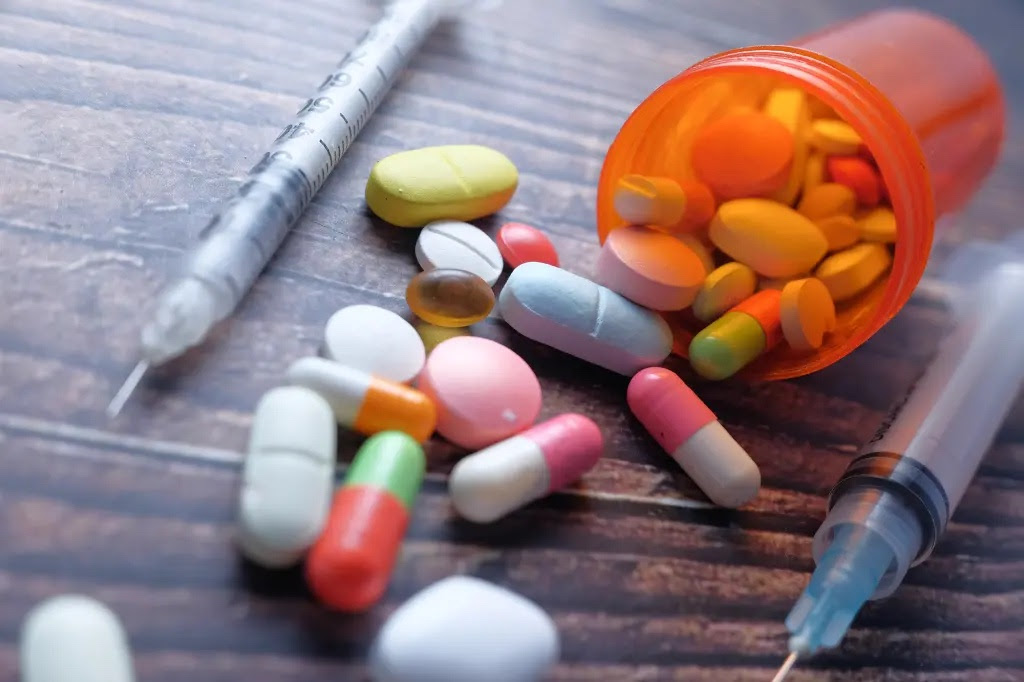Synthetic drugs made in Mexico and sold for cheap in the U.S. are killing tens of thousands while fueling a growing humanitarian catastrophe. Many of the victims are young, many are homeless, and many are people of color.
That’s according to award-winning reporter Sam Quinones, author of four acclaimed books dealing with synthetic drug production in Mexico and their impact on the U.S., including the 2021 book, “The Least of Us: True Tales of America and Hope in the Time of Fentanyl and Meth.”
Quinones spoke during an EMS briefing looking at the alarming rise in meth and fentanyl addiction, linked to more than 107,000 deaths in 2021, according to the Centers for Disease Control and Prevention.
“This has never happened before, where one source, the Mexican trafficking world in this case, has covered the entire country from Los Angeles to Maine… with not one, but two of these very potent and devastating drugs,” Quinones said.
‘No such thing as a long-term fentanyl addict’
A study from last year found a tenfold increase in meth use among Black Americans between 2015 and 2019. Nationally, Native Americans and Alaska Natives are among the groups most impacted by methamphetamine use.
Quinones also noted that meth and cocaine are increasingly laced with the synthetic opioid fentanyl. He cited the case of actor Michael K. Williams, who played Omar in the HBO hit crime series, The Wire. “He died about a year ago from cocaine. He had a cocaine problem, but the cocaine he bought was laced with fentanyl, and he died.”
Fentanyl overdoses surged 94% during the pandemic, currently killing on average some 196 Americans per day, according to reporting from the Washington Post.
The Biden Administration recently launched a public messaging campaign, One Pill Can Kill, which seeks to warn people about the dangers of fentanyl.
With these new drugs, you don’t have the luxury of time, says Quinones. Unlike heroin addicts who can use for decades, the fentanyl and meth coming out of Mexico today are far more damaging and potentially lethal, sometimes with a single dose.
“There’s no such thing as a long-term fentanyl addict,” said Quinones. Two milligrams of the drug can kill you. And barring extraordinary intervention like multiple doses of Narcan, fentanyl is so addictive, and dosage/pill vary so wildly that it is now among the most lethal drugs out there.
One kilogram of pure fentanyl can produce half a million lethal doses. Traffickers often cut it with lactose and other things to increase volume and the DEA says fentanyl is often mixed with other drugs like meth, heroin, and cocaine.
Straining healthcare systems
Quinones spoke alongside an ER physician working in a major Western city who has spent much of the pandemic treating patients addicted to meth and fentanyl. He asked to remain anonymous.
“It’s important to know that heroin and morphine, oxycodone, your typical opiates before fentanyl, are dosed in milligrams (one thousandth of a gram), right? Whereas fentanyl is dosed in micrograms,” or one millionth of a gram, highlighting its potency, he said.
Fentanyl is often used in ER settings for patients who are bleeding and have low blood pressure.
“So, patients will get fentanyl, they’ll be high for a very short amount of time, or their pain will be treated for a very short amount of time, and then they’ll have pain again,” the physician noted. “But on the street, it’s very hard for people to use it in a way that is safe.”
Hospitals began seeing increasing cases of “opioid use disorder” around 2019 and 2020, coinciding with the pandemic, the physician noted.
With methamphetamine, the highly pure meth being shipped into the country by Mexico’s cartels induces psychosis in many patients that the physician says can take “weeks to months to even years to go away.”
That psychosis is playing out in growing homeless populations in major urban centers around the country, Quinones argues, noting meth addicts will “go to any length not to be separated from the drug.” He says discussions around homelessness that focus only on the shortage of affordable housing miss this crucial point.
Hospitals, meanwhile, are struggling to cope with the influx of fentanyl and meth patients amid a surge in COVID, flu and the respiratory illness RSV.
“We don’t have the capacity in most ERs to put every person who comes in with methamphetamine intoxication on the 72 hours hold because we need those beds for heart attacks, for strokes, for everything else. There’s not enough capacity in health care to address this issue,” the physician said.
A ‘massive trade’
Border officials have seized some 2,200 pounds of fentanyl per month since July, according to the Washington Post. The tally represents a fraction of what is making it into the country, they say.
According to Quinones, trade along the 1,933-mile border between the U.S. and Mexico helps to camouflage shipment of the drugs. He estimates that just around five percent of trucks are inspected, and that cartels have come up with “amazingly ingenious ways” of hiding the drugs in trucks that cross the border every day.
“The massive quantities of trade between the two countries… we just simply do not have the capacity to check even a moderate percentage of all the trucks coming through.”
Once the drugs are in the country, social media platforms are providing an easy channel for traffickers to reach buyers, including young people. Quinones recalls a protest in Santa Monica last year organized by parents of children who died after purchasing fentanyl-laced pills online.
Social media apps have “become kind of like the new street corner” for drug buys, he said.
Given the severity of the crisis, something Quinones describes as a “national poisoning,” he says international collaboration between Mexico and the United States absolutely has to happen. Current interdiction programs are inadequate. “I think this has reached beyond simply a drug issue… It really has to be taken up by the State Department.”






